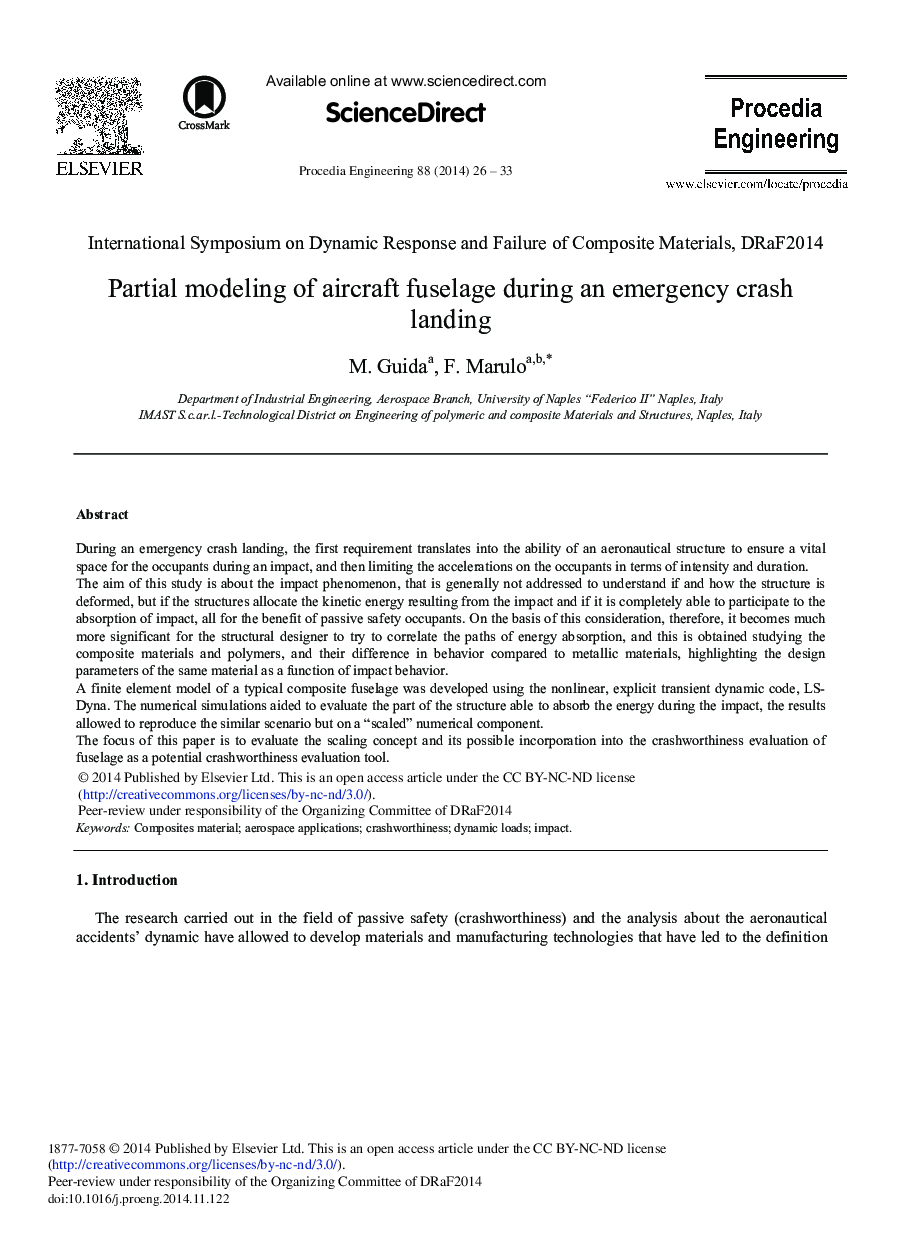| Article ID | Journal | Published Year | Pages | File Type |
|---|---|---|---|---|
| 857578 | Procedia Engineering | 2014 | 8 Pages |
During an emergency crash landing, the first requirement translates into the ability of an aeronautical structure to ensure a vital space for the occupants during an impact, and then limiting the accelerations on the occupants in terms of intensity and duration.The aim of this study is about the impact phenomenon, that is generally not addressed to understand if and how the structure is deformed, but if the structures allocate the kinetic energy resulting from the impact and if it is completely able to participate to the absorption of impact, all for the benefit of passive safety occupants. On the basis of this consideration, therefore, it becomes much more significant for the structural designer to try to correlate the paths of energy absorption, and this is obtained studying the composite materials and polymers, and their difference in behavior compared to metallic materials, highlighting the design parameters of the same material as a function of impact behavior.A finite element model of a typical composite fuselage was developed using the nonlinear, explicit transient dynamic code, LS-Dyna. The numerical simulations aided to evaluate the part of the structure able to absorb the energy during the impact, the results allowed to reproduce the similar scenario but on a “scaled” numerical component.The focus of this paper is to evaluate the scaling concept and its possible incorporation into the crashworthiness evaluation of fuselage as a potential crashworthiness evaluation tool.
